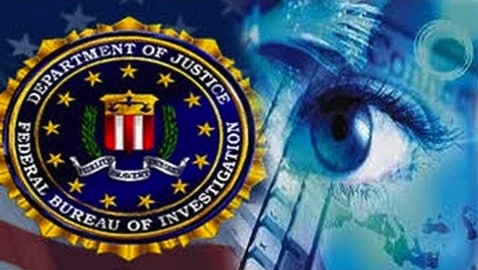
In the 15-minute time span before the joint session of Congress convened at 1:00 p.m. on January 6, 2021, two incidents that set the stage for the day’s ensuing chaos happened simultaneously.
First, a man named Ryan Samsel, after taking some sort of direction from Ray Epps, overran a thin line of police and metal racks in what would be the first official breach of Capitol grounds around 12:50 p.m. (Samsel was charged and has been incarcerated for more than a year; Epps faces no charges.) Joining Samsel were members of the Proud Boys and a still-unknown number of FBI informants.
Around the same time, a woman named Karlin Younger who just happened to be walking to a laundry facility near the Republican National Committee headquarters just happened to look down and see what she believed was a pipe bomb nestled between a dumpster and a fence right next to the building.
Both events fueled panic in the nation’s capital just as a contentious meeting to certify the Electoral College vote in the 2020 presidential election got underway in the chamber of the US House of Representatives. Then, the news got worse. Capitol police reportedly discovered another explosive outside the DNC headquarters.
The New York Times immediately broke the story: “The device that was found at the R.N.C. was a pipe bomb that was successfully destroyed by a bomb squad, according to an official for the R.N.C,” reporters Maggie Haberman, Michael Schmidt, and Katie Benner wrote. “The package at the D.N.C. has yet to be identified, according to a top Democrat briefed on the matter who was not authorized to speak publicly about it.”
The Times story went viral. At 1:53 p.m., Representative Elaine Luria tweeted that she “just had to evacuate my office because of a bomb reported outside, while the President’s anarchists are trying to force their way into the Capitol.”
Capitol police the next day issued a statement. “The USCP Hazardous Materials Response Team determined that both devices were, in fact, hazardous and could cause great harm to public safety,” Steven Sund, the Capitol police chief wrote on January 7, the day he resigned from the force. “The devices were disabled and turned over to the FBI for further investigation and analysis.”
During a press conference a few days later, Michael Sherwin, the acting US Attorney for the District of Columbia, told reporters that law enforcement agencies, including the ATF and FBI, were collaborating to find the suspects who set the pipe bombs. The bombers would be “brought to justice,” promised Steven D’Antuono, the newly appointed head of the D.C. FBI field office, who warned that “every rock was being unturned” to apprehend the suspect or suspects. The FBI initially offered a $50,000 reward.
But as the FBI successfully rounded up hundreds of Capitol trespassers using sophisticated tools such as geofence warrants, the trail of the pipe bomber went cold. Grainy footage released by the FBI purportedly showed the pipe bomber in action the night of January 5—the time the agency determined the bombs had been planted—and in March, D’Antuono asked for the public’s assistance in tracking down the bomber.
Anyone who showed an interest in making explosives prior to January 5, 2021, or possessed galvanized pipe, wire, and “multiple kitchen timers” should be turned in to the FBI, D’Antuono said in a dramatic video message, even if the person was a relative or friend.
But more than a year later, not only has a suspect not been identified or caught, the pipe bomb story gets weirder and weirder.
Politico recently reported that Kamala Harris was inside the DNC headquarters at the same time the explosive sat outside the building. Harris, who inexplicably left the Capitol around 11:30 a.m. on January 6 after attending an intelligence briefing, choosing not to participate as a US senator in the certification of her own historical election, was evacuated out of the DNC headquarters by the Secret Service at 1:14 p.m., several minutes after Capitol police inspected the building after the RNC bomb was found.
That shocking revelation means one of two things: The Secret Service, in a security sweep of the DNC building and exterior grounds prior to her arrival, missed what the FBI insists was a viable explosive device—a scenario that seems deeply unlikely considering the city was in a state of heightened alert and agents presumably would be extra cautious.
Or, the FBI is lying.
Given what we know about the FBI’s politically motivated malfeasance during the Trump era, the likelihood the pipe bomb story was another FBI hoax instead of a legitimate threat becomes more conceivable each day.
Which leads us to the woman who “found” the pipe bombs outside the RNC right just before the joint session gaveled in on January 6. Karlin Younger is described in news reports as a “resident” of D.C. or an employee of the Department of Commerce.
But Younger’s résumé is a bit more detailed. On January 6, when she took a midday walk to the laundromat and found the first pipe bomb, Younger was a project manager for FirstNet Authority, a public-private partnership between AT&T and first responders to prioritize emergency communications during an attack or disaster. Standing board members for FirstNet include the attorney general and secretary of Homeland Security. Several federal agencies, including the Justice Department, use FirstNet services.
And a few weeks before January 6, FirstNet received its largest-ever commitment from a law enforcement agency, a $92 million contract for FirstNet’s services.
That agency was the FBI.
Read the rest of the article here.

